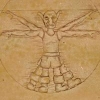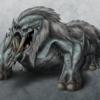How to make textures for high top-down perspective ?
Well, I need some advices in making texture for a top-down like perspective. Camera hovers 30-50m above the ground looking down on the terrain.
How do I make detailed textures suitable for this perspective ?
Sofar I've tried the following approaches:
1. Use aerial images:
Can't find any of these :/
2. Use standard textues:
Didn't work, i.e. you see single blades of a standard grass texture what looks extremly unrealistic.
3. Scale standard textures down and repeat them:
Didn't work either, you see the repeating texture pattern.
I want to make textures mainly for sand/beach, grass, dirt, roads/streets.
Any tips ?
--
Ashaman
Paint them by hand and/or do photosourced textures that are manipulated to be higher density.
You can compound/tile an existing tilable texture in photoshop, flatten all layers and then remove the repetition, rinse and repeat until texture is of desired detail density.
Though, as said, the best i think would be to paint them. Because you'll see that as you go further away from a particular object in real life that the fine detail eventually devolves into its own unique texture. For example, up close you see particles of sand, farther away you see the actual shape and shading of the sand ripples, even further away you see mounds of sand...etc. By painting the textures, you can achieve this effect a lot better and easier than by editing photosourced textures (unless they were taken at the same distance you're going for).
You can compound/tile an existing tilable texture in photoshop, flatten all layers and then remove the repetition, rinse and repeat until texture is of desired detail density.
Though, as said, the best i think would be to paint them. Because you'll see that as you go further away from a particular object in real life that the fine detail eventually devolves into its own unique texture. For example, up close you see particles of sand, farther away you see the actual shape and shading of the sand ripples, even further away you see mounds of sand...etc. By painting the textures, you can achieve this effect a lot better and easier than by editing photosourced textures (unless they were taken at the same distance you're going for).
-------------------------Only a fool claims himself an expert
I would suggest adding noise to a base color - I've done this successfully in the past. Take a base color (green for grass, straw yellow for sand, etc) and add noise to it. If you can, use "Gaussian noise" and not spike - Gaussian noise is softer and blends into the background color rather than making a stark salt/pepper speckled mix.
For grass, start with your background green color (I suggest RGB 100,150,50 - this is a nice "grass" looking green, but the color palate of your game depends on your style (cartoonish, realistic, etc). Anyway, use the "add noise" tool to add several colors to this green background. I would suggest the following: a strong dose of brown and yellow noise, and a light dose of black noise. The exact outcome of this is going to depend of the (a) strength and (b) density of your noise, so you might need to play with these settings to get it looking right.
You can use this same technique for the sand, etc. Just pick the base color that will predominate the texture, and then add several servings of noise to it. Use noise that is NOT the same as the base color - i.e. don't use a different shade of green on the green background. Well, you can, but I think it's best to avoid it. Pick your green and stick with it - then use yellow, brown, heck, even blue, orange, red, etc. noise to add texture to the green.
Once you get your basic texture, you can apply an actual texture to the grass using a texture tool and a grayscale bumpmap for really dramatic look of uneven terrain... let me know if you need help with that.
`Hope this helps,
Jake
For grass, start with your background green color (I suggest RGB 100,150,50 - this is a nice "grass" looking green, but the color palate of your game depends on your style (cartoonish, realistic, etc). Anyway, use the "add noise" tool to add several colors to this green background. I would suggest the following: a strong dose of brown and yellow noise, and a light dose of black noise. The exact outcome of this is going to depend of the (a) strength and (b) density of your noise, so you might need to play with these settings to get it looking right.
You can use this same technique for the sand, etc. Just pick the base color that will predominate the texture, and then add several servings of noise to it. Use noise that is NOT the same as the base color - i.e. don't use a different shade of green on the green background. Well, you can, but I think it's best to avoid it. Pick your green and stick with it - then use yellow, brown, heck, even blue, orange, red, etc. noise to add texture to the green.
Once you get your basic texture, you can apply an actual texture to the grass using a texture tool and a grayscale bumpmap for really dramatic look of uneven terrain... let me know if you need help with that.
`Hope this helps,
Jake
This topic is closed to new replies.
Advertisement
Popular Topics
Advertisement
Recommended Tutorials
Advertisement









